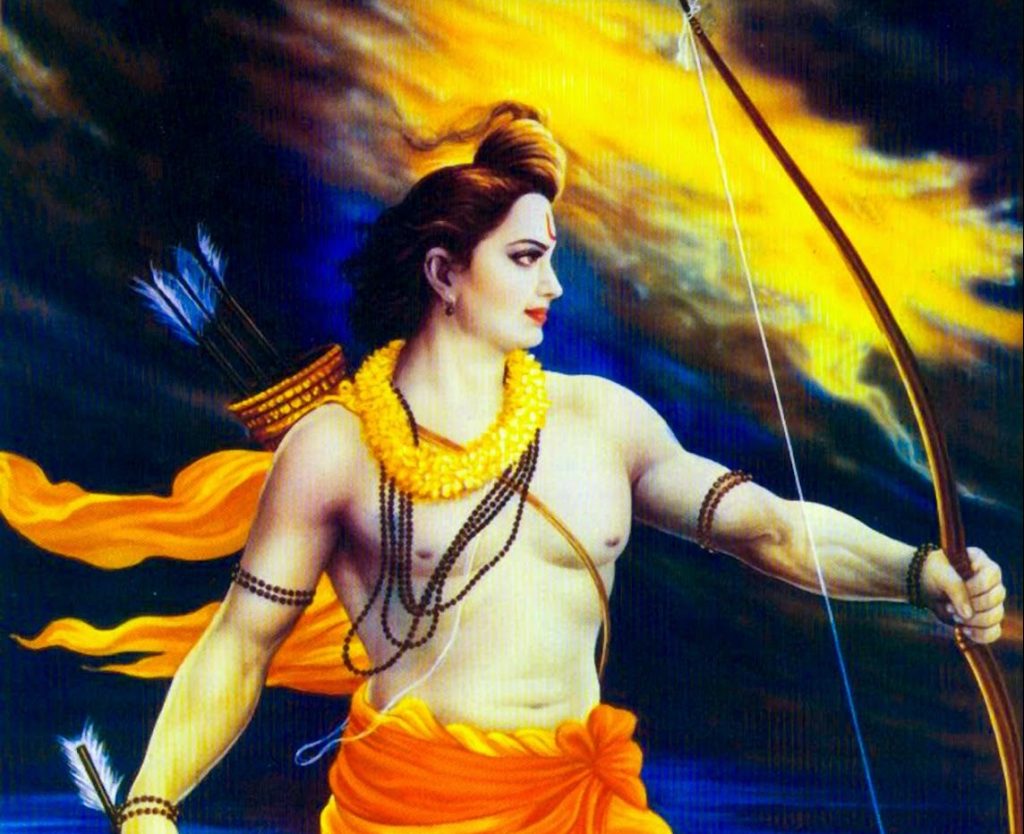If someone was a career student, we would definitely be going to make fun of him. However, if someone says “I am a student of the Ramayana or Bhagavad Gita,” devout Hindus are going to look up to him with awe and admiration. I certainly feel that it is time that this unconscious acceptance of norms be questioned and challenged. I am of the view that the Ramayana is a manual for life, a guide to inspire us to action and not just to study, and that Rama and Krishna are exemplary individuals who have excelled in their duties.
Swami Vivekananda once said to the youths that they would understand the Bhagavad Gita better by playing football. Is this blasphemy? This is the liberty that Hinduism offers its followers. Unfortunately, a few have come to propound a literal interpretation of not just the Bhagavad Gita but also a Hindu way of life- attend Ramayana and Satsangh, sing bhajans, and partake of prasad and bhojan. Nothing is said about engaging in community projects. What is worse is that the few who make efforts to engage in social uplift and engage in public discussions and debates are deemed trouble makers, so much so that even the late Sat Maharaj was bitter poison for many fringe leaders to swallow.
Swami Vivekananda, speaking to youths said: “You will be nearer to Heaven through football than through the study of the Gita.” Swamiji said to the youth that they must have “nerves of steel, muscles of iron and minds like thunderbolts.”
Our indentured ancestors assembled every evening after completing their household chores and engaged in the reading of the Ramayana. This Ramayana was a tonic that boosted their energy to face the challenges ahead. It was not only hard work and the abuses of the overseers that conspired against them but also the denial of their right to practice their way of life.
Our Indian ancestors never hesitated to strike in the workplace to highlight injustice. It was their initial strikes that spread to the oilfields of south Trinidad and led to the labor uprising of 1937 that demanded better wages and working conditions for workers. The contribution of Adrian Cola Rienzi was no less in the success of this struggle that resulted in the right of workers to organize in trade unions and the right to negotiate for living wages and better working conditions.
On October 30, 1884, when the British authorities attempted to ban the annual Hosay Festival, the Indians took to the streets in defiance. More than 17 were killed on that fateful day and scores of others suffered bullet wounds and later succumbed to their injuries.
Bhadase Maraj was no less a student of the Ramayana. He interpreted the Ramayana to earn wealth, build mansions and purchase luxury vehicles but also to identify with the struggles of his community. In the 1950s, Hindus were almost 100% illiterate with social forces conspiring to deprive them of an education. Together with Doon Pandit, Simbhoonath Capildeo, Bhadase Maraj mobilized the community and demanded the right of Hindus to have schools to educate their followers. This led to the birth of the Sanatan Dharma Maha Sabha and its whirlwind building of schools in the sugar belt districts of the country.
Basdeo Panday has always defined himself as a philosophical Hindu and has used his dharma to struggle for social change. In the 1970s Panday skillfully brought trade unions together to struggle for better wages and working conditions for workers. In the sugar industry, he was able to win all-year-round employment for workers in the industry.
It was this victory of Basdeo Panday for the sugar cane workers that resulted in the opening of small business enterprises throughout the sugar belt. Additionally, an increasing number of children of sugar cane workers began attending secondary schools. If today, the Indian community takes pride in education it is only because of the initiative and struggles of Bhadase Maraj, Basdeo Panday, and the dedication and sacrifices of principals, teachers, and parents.
Sat Maharaj’s bold and daring mannerism had borne fruits for the Hindu community. He struggled for the removal of the Trinity Cross as the highest national award. Also, when the Maha Sabha’s application for a broadcast license was denied, Mr. Maharaj fought all the way to the Privy Council for justice. He certainly did not hide behind the Ramayana!
Norris Deonarine was a consistent voice for farmers in the country. His sudden passing more than a decade ago has left a void that has not been filled. Instead of farmers organizing themselves to lobby for state support for the industry, many rather assemble where the Ramayana is read than organize any positive actions. Instead of coming together and making representation, the voice of farmers has been reduced to the lone whining of Shiraz Khan.
Ramayana and Mahabharata are epics because they tell us about the lives of heroic characters who struggled against all odds to fulfil their duties. The heroes of the epics are prototypes for the average man and woman to use to spring themselves into action.
So, when you think about identifying some students of the Ramayana and Bhagavad Gita, here are some names I want you to consider: Bhadase Maraj, Doon Pandit, Simbhoonath Capildeo, Basdeo Panday, Sat Maharaj, Norris Deonarine, to name a few. These men have imbued themselves with the spirit of Rama and Krishna, thus bringing alive the heroism of these epic characters.
By Dool Hanomansingh
